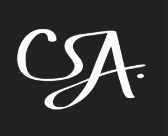Words: Tshiamo Seape
A new era has begun in the world of the creative classes and it has been characterised by collaboration. Everywhere you look brands, artists and musicians are teaming up within and without their circles and doing away with established norms to recreate the world with a brand new vision of how we express ourselves.
Tracing the roots of the collaboration phenomenon, it can be seen as an offshoot of what is termed “the shared economy.” The shared economy, as a practice, began in the 2000’s and focuses on reimagining economic activity to incorporate peer to peer sharing of goods and services. Younger generations, still reeling from the effects of the recession – where access to and ownership of various goods and services became lessened – sought a way to reclaim control over their consumption habits, and become active members rather than passive “victims” of the economy. Combine this with enabling technologies, and the awareness of population growth and increasing scarcity of resources, it is easy to see where the evolution of the sharing economy, and by extension “collaborative consumption” came from.
Services like Uber and Airbnb epitomised a changing consumer landscape that is beginning to seriously adopt collaboration as an integral part of commerce. So when, In 2011, TIME magazine named collaboration one of the top 10 ideas that will change the world The collaboration phenomenon had finally reached the mainstream.
As the world is on the hunt for novelty, Africa has become the most fertile ground for groundbreaking ideas
With the recent release of our On the Radar Vol. 2. CSA compiled a list of the 50 most influential creatives and innovators from across Africa. From athletes to entertainers our chosen stars will be dominating their fields for years to come. A host of our Radar influencers has been expanding their brand thanks to successful collaborations between themselves (Dune Tilley and Imraan Christian) and with previous alumni as well (Frank Casino and Gemini Major). Which is why apart from the Top 50, we included a brand new section celebrating collectives – like-minded individuals working toward the same goal.
As the world is on the hunt for novelty, Africa has become the most fertile ground for groundbreaking ideas. Our influence has become ubiquitous – almost required, everywhere from the runways to the radio stations. Our sound is in vogue and it’s about time. We have seen two high profile international collaborations in as many months. SA Hip -Hop pioneer, Kwesta released the devastatingly infectious “Spirit” featuring U.S.rapper Wale. The collab has opened up doors for even more international features with Rick Ross & Tory Lanez which are set to appear on the MC’s forthcoming album.
“As much as people might question some of my collabs and everything, my plan was to break down the borders. So I’m not moving towards an international sound, I just want to break down the musical borders,” he said.
He has done all this without compromising the sound that made him a star and endeared him to his fans. The second major international collaboration comes from Frank Casino who went into the studio with A$AP Ferg following his performance at this year’s Capsule Fest in September.
A brand can affect their clout as well as their bottom line by joining forces with the right partner
The artists on the radar are no stranger to collaboration either. As mentioned earlier, this The latest edition of On the Radar takes special notice of collectives, and for good reason. FAKA, 2 Many Siblings, The Sartists, Dear Ribane, and Prime Obsession have all made a definitive statement locally and internationally in their respective fields. Like the brands mentioned earlier what collaboration is able to do is merge disparate offerings into a cohesive vision that reflects the sensibilities of all parties without becoming overwhelming. Take the creative collection The Sartists, for example. Every member a multitalented individual, but together their list of skills makes for an impressive force: Designer, photographer, art director, stylist, and consultant, the members have used their collective clout to create one of the most dynamic groups influencing urban culture in South Africa today. The past few years have seen their profile grow and collaborations with the likes of Adidas and Levi’s have become the norm.
Of course, collaboration is not merely a local trend – it is a worldwide movement with no signs of slowing down, and perhaps the most visible example of where the potency of collaboration can be seen is in the fashion industry.
Brands at every rung of the fashion ladder are engaging in one headline collaboration after the other. Just five years ago it would have been unimaginable to think of skate brands – synonymous with street culture – called upon by luxury and heritage brands to reinvigorate and introduce them to new audiences. This is exactly why the likes Louis Vuitton and Karl Lagerfeld enlisted the help of Supreme and Vans respectively. In many cases, the union of two brands, however temporary, can yield returns that far exceed those that either entity could expect working on their own: LV x Supreme garments selling out within hours and resale prices reaching 100 times (yes, 100 times!) their original value.
A brand can affect their clout as well as their bottom line by joining forces with the right partner. According to the global fashion search engine, Lyst.com (having 65 million customers, 12,000 brands, and 5 million products), Off-White rose in popularity from the world’s 34th most popular brand to its 3rd in the last quarter of 2017, landing behind only Gucci and Balenciaga. It would be foolish to believe that the Nike x Off- White collaboration (a reimagining of 10 of Nike’s most iconic shoes- Air Max, Air Force One etc.) had nothing to do with this meteoric rise. Brands at the top look to find a way to expand into fragmented niches, while smaller brands seek to appeal to higher-end consumers and increase their margins and entrench themselves with a new consumer base who are not price sensitive
“The element of newness and surprise that collaboration can offer is a critical weapon in the war to stay present in the newsfeeds of customers – The unexpected is a very important factor in collaboration”, says Cary Leitzes of creative consultancy Leitzes & Co. to the businessoffashion.com.
Moving forward we don’t expect the trend to slow. The role of e-commerce will continue to become more prominent with online only offers increasing in popularity. The beauty industry will also surpass luxury ready-to-wear brands as they make use of micro-influencers and rely less on elaborate marketing spectacles.
As we move ever closer to a connected world the prevalence and impact of collaboration will only become more noticeable. With recent events at the front of our mind, we can only imagine that this will mean greater exposure and recognition for the many (many) talented artists across numerous fields who will finally have the means to send their creative expression to increasingly receptive audiences from all corners of the globe. As the playing field continues to level we anticipate the next generation of collaborators who will step up to the plate and create works of lasting relevance.





